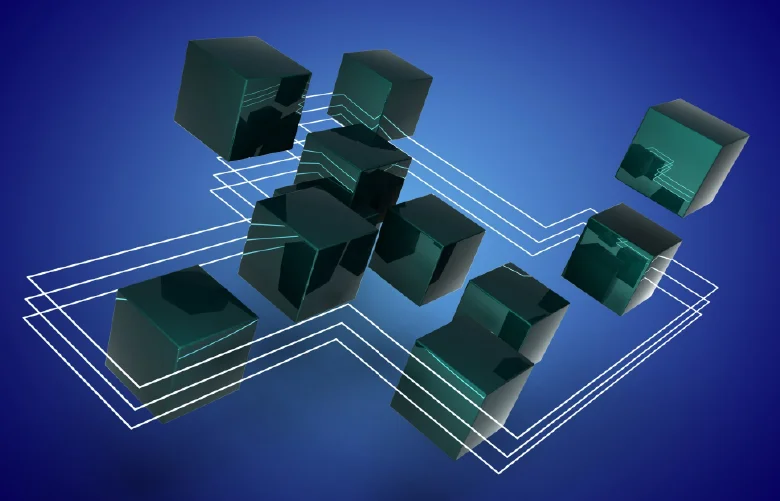An application of stack in data structure is a special type of data structure that follows the Last-In-First-Out (LIFO) principle. It allows for manipulating and storing elements in an ordered fashion, making it ideal for operations such as sorting, searching, and reversing.
It is also useful for various other tasks, including checking if parentheses are balanced in arithmetic expressions or evaluating recursive algorithms. In this blog post, we’ll look at what is the application of stack in data structures and what application it offers. So, let’s get started. Enroll in a AI & ML Course by Hero Vired today!
What is Stack in Data Structures?
Stacks are a useful abstract data structure that can help organize elements in a Last In First Out (LIFO) manner, providing an efficient and effective way to store items. This type of structure works by allowing the user to push new items onto the application stack and then pop them off in reverse order. Applications of stack in Data Structure are primarily used for temporary storage. They have limited memory capacity and tend to be inefficient compared to other data structures, such as hash tables or linked lists.

Stack has many applications in computer science and algorithms, especially for solving problems related to recursion or balancing symbols. Moreover, Arrays in data structures represent a real-world stack, wherein the first element of an array represents the topmost item in the stack.

Get curriculum highlights, career paths, industry insights and accelerate your technology journey.
Download brochure
Brief About Data Structures
A stack is an abstract data type that functions as a repository of elements, with two primary operations: push and pop. Push adds an element to the topmost portion of the stack, while popping eliminates it from there. A stack in Data Structures is a LIFO (last in, first out) structure; thus, the last element added (pushed) onto the stack will be removed (popped) first.
Stacks can be used in various applications, such as evaluating expressions or implementing functions calls. They can also be used for memory management in recursive functions by storing past states of local variables and parameters until it is time to restore those values later.
In computer science, many problems have simple recursive solutions but can be difficult to solve without a stack. For example, depth-first search algorithms often use stacks to track what nodes in a graph need to be explored and which have already been explored. Queue data structures can also be used for this purpose, but stacks are often preferred as they require less memory and fewer operations.
Stack Representation in Data Structures
Stack is a linear data structure which follows the Last In First Out (LIFO) principle. It means that the last element entered in stack will be removed first, and the first element entered in stack will be removed at last. Stacks are widely used in computer programming to store and perform operations on data.
An array or linked list can easily implement a stack. An array implementation of stack can have a fixed size or dynamic size based on application requirements. A linked list implementation of stack in data structures is more flexible as it allows for elements to be added and deleted dynamically as per requirement.
LIFO Principle of Stack
A stack is one of computer science’s most commonly used data structures. It follows the Last-In-First-Out (LIFO) principle, which means that the last item added to a stack will be the first one to be removed from it. This makes it ideal for items that must be processed in reverse order, such as undo/redo operations or call stacks.

In terms of implementation, stacks are typically implemented using an array or linked list. The two main operations of a stack are push and pop: pushing an element onto the stack adds it to the top while popping an element off removes it from the top and returns its value. Other operations may include:
- Peeking at what’s on top of the stack.
- Checking if a stack is empty.
- Retrieving the size of a stack.
Basic Operations of Stack in Data Structure
Stack is a special data structure in which the elements are stored and accessed based on Last In First Out (LIFO) principle. It allows insertion and deletion of elements at one end referred to as top only.
Stack operations such as Push, Pop, Peek, IsEmpty, and IsFull, etc., manipulate the elements in a stack.
This operation adds an element on the top of the stack structure.
For example: If we have a stack containing {1, 2, 3}, then after pushing 4 onto it, it will become {1, 2, 3 , 4}.
This operation removes an element from the top of the stack structure.
For example: If we have a stack containing {1, 2, 3}, then after popping it will become {1, 2}.
This operation simply returns the element’s value at top of stack without deleting it.
For example: If we have a stack containing {1, 2, 3}, then after peeking it will remain the same i.e., {1, 2, 3}.
This operation checks whether the stack is empty and returns a boolean value.
For example: If we have an empty stack, IsEmpty will return true or false.
IsFull: This operation checks whether the stack is full and returns a boolean value.
For example: If there are 10 elements in the stack and the stack size is 10 (i.e., no more elements can be inserted), then IsFull will return true or false.
Working of Stack in Data Structure
A stack is a linear data structure that follows the Last In First Out (LIFO) principle. It means that the element inserted at last is the first one to be removed. A stack can be implemented in two ways: using arrays and linked lists in data structure.
In an array implementation, the top of stack points to the last element of the array. In a linked list implementation, top refers to the head node. The stack operations include push and pop. Push adds an item to the top of the stack, and pop removes it from the same location. Both these operations require constant time, i.e., O(1).
Advantages & Disadvantages of Stack in Data Structure
Let’s look at some major advantages and disadvantages of stack in Data Structure
Advantages of Stack in Data Structure
- Stack is easy to implement as it follows Last-In-First-Out (LIFO) principle. That is, the last item inserted into the stack will be the first to be removed.
- Adding or removing an element from a stack doesn’t require shifting of other elements, thus making it very fast in comparison to an array.
- Stacks don’t require much memory and can be easily implemented using arrays or linked lists.
Disadvantages of Stack in Data Structure
- The main disadvantage of stacks is that they have a fixed size, limiting the number of elements that can be added to the stack.
- Stacks are unsuitable for searching or sorting operations, as they operate on the last element inserted into the stack.
- It is also impossible to access elements randomly in a stack, as it follows the LIFO principle.
The Bottom Line
In this guide we have covered what is stack in data structure and what are the advantages and disadvantages associated with it. Stack in Data Structures is a powerful tool for managing data that allows for efficient storage, search and retrieval of information. It is an important element in data structure algorithms, and should be mastered. By understanding the concept and its implementation, one can develop powerful algorithms to manage large datasets quickly and efficiently.
With its versatility and effectiveness, Stack in Data Structures plays a critical role in software development.
FAQs
A stack, a type of data structure that adheres to the Last In First Out (LIFO) principle, efficiently removes elements in the same order they were added - with the most recent item being removed first. This data structure operates on two basic principles: push and pop.
A stack is a type of data structure which primarily operates on the Last-In-First-Out (LIFO) principle. The main operations of a stack include push, pop, peek and is Empty.
A stack and a queue are two different types of data structures used to store and organize data. The main difference between them is their order of operations: stacks use the Last-In-First-Out (LIFO) principle, meaning the last item added to the structure is the first item that can be retrieved; queues use the First-In-First-Out (FIFO) principle, meaning the item that is added first to the structure will be the one retrieved first.
A stack is typically implemented using an array or linked list in programming languages. The most common operations on a stack are push and pop, which add and remove items from the top of the stack respectively.
Yes, a stack can be implemented using an array or a linked list. An array is a linear organization of elements stored in adjacent memory locations, while the non-linear linked list consists of nodes with reference to the next component in its sequence.
Push and pop operations on a stack are used to add or remove elements from the top. To perform a push operation, an element is added to the top of the stack. This is done by assigning the data that needs to be pushed onto the stack, then incrementing the pointer that points to the top.
To perform a pop operation, the element on the top of the stack is removed. This is done by decrementing the pointer which points to the top of the stack, then returning the data located in that position.
Updated on August 1, 2024










